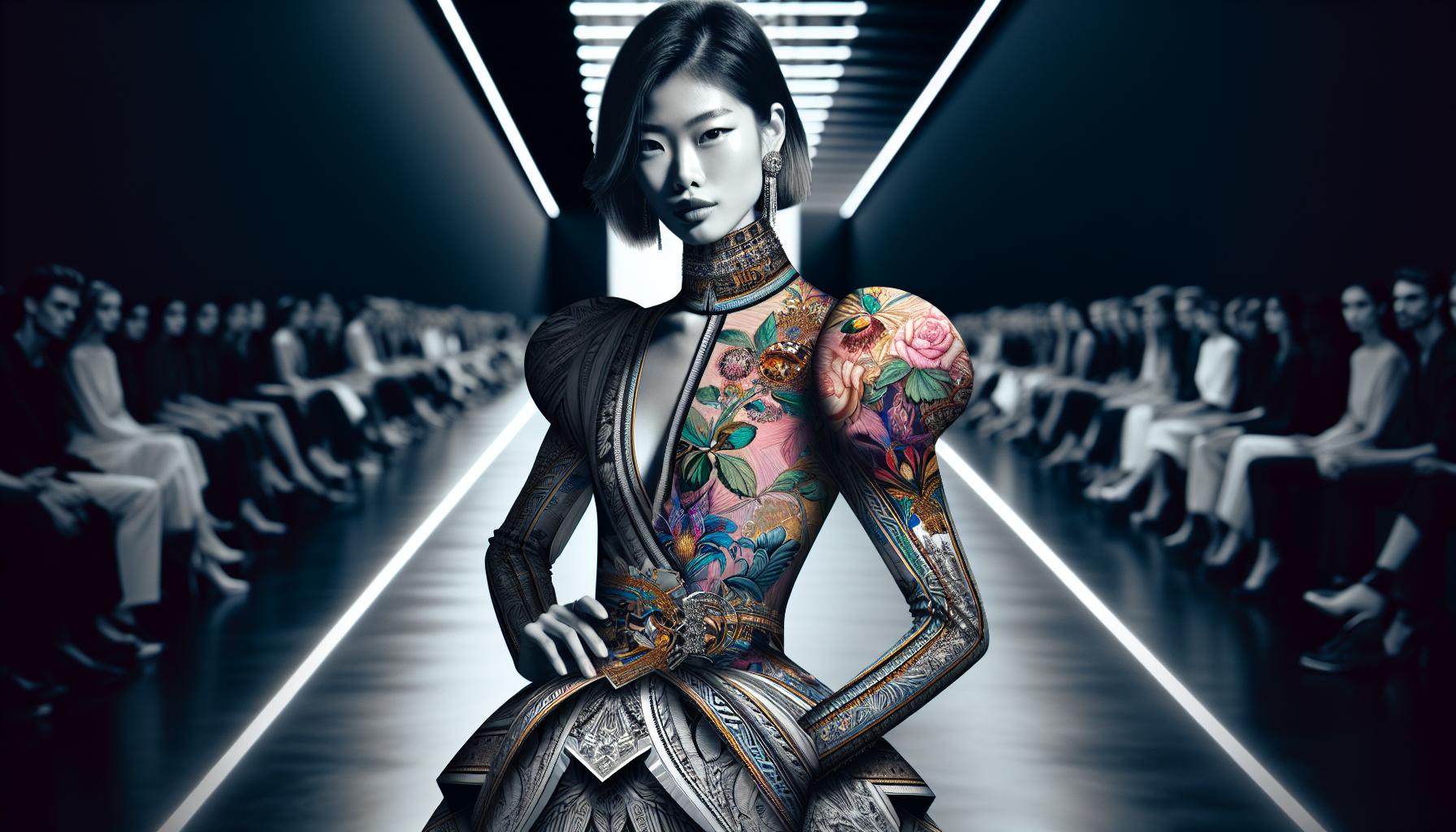From iconic white hair to unmistakable sunglasses, Fashion:frs4qdjo8km= Karl Lagerfeld transformed the fashion world with his unique vision. His innovative designs and sharp wit kept brands fresh and fabulous, setting trends that echoed globally. Whether it was Chanel’s classic elegance or his own daring collections, Lagerfeld’s influence remains undeniable.
In an industry where change is the only constant, Lagerfeld’s ability to blend tradition with modernity kept him ahead of the curve. His playful yet professional approach made high fashion accessible and endlessly intriguing. Dive into the legacy of a man who didn’t just follow trends – he defined them.
Fashion:frs4qdjo8km= Karl Lagerfeld
Fashion:frs4qdjo8km= Karl Lagerfeld revolutionized the fashion industry by redefining iconic brands and introducing contemporary aesthetics. He transformed Chanel by blending its classic elements with modern design, ensuring its continued relevance in the luxury market. Lagerfeld’s innovative approach extended to haute couture, where he consistently pushed creative boundaries, setting new trends that influenced global fashion.
Expanding Chanel’s product offerings, Lagerfeld introduced accessories and fragrances that became best-sellers worldwide. His signature style, characterized by sharp tailoring and bold patterns, became synonymous with high fashion, inspiring designers and fashion enthusiasts alike. Lagerfeld’s strategic use of media and fashion shows elevated brand visibility, positioning Chanel as a staple on international runways.
Collaborating with various artists and brands, Lagerfeld fostered a blend of art and fashion that broadened the industry’s horizons. His ability to merge traditional craftsmanship with cutting-edge design techniques set new standards for quality and innovation. Under his leadership, Chanel thrived financially, maintaining its position as a top luxury brand.
Lagerfeld’s commitment to sustainability marked his impact, as he advocated for eco-friendly practices within the fashion sector. By prioritizing environmentally conscious methods, he influenced industry-wide changes toward more sustainable fashion production. Additionally, his mentorship of emerging designers cultivated new talent, ensuring the future of high fashion remained vibrant and dynamic.
Through relentless creativity and strategic vision, Fashion:frs4qdjo8km= Karl Lagerfeld left an indelible mark on the fashion world. His legacy encompasses not only stylish designs but also a forward-thinking approach that continues to shape fashion today. By balancing tradition with innovation, Lagerfeld made high fashion both accessible and captivating, securing his place as a pivotal figure in the industry.
Signature Designs And Styles

Fashion:frs4qdjo8km= Karl Lagerfeld’s signature designs and styles defined modern high fashion. His innovative approach transformed traditional silhouettes into contemporary masterpieces. Each collection reflected his meticulous attention to detail and mastery of craftsmanship. Lagerfeld seamlessly blended classic elements with avant-garde techniques, creating timeless yet cutting-edge pieces.
Iconic Collections
Lagerfeld’s iconic collections consistently pushed boundaries and set trends. The Fall 2012 Chanel collection introduced exaggerated shoulders and bold patterns, redefining the brand’s aesthetic. Spring 2014 showcased a fusion of monochrome palettes with intricate embroidery, highlighting his ability to balance simplicity and complexity. The 2018 Metiers d’Art collection celebrated artisanal craftsmanship, featuring handcrafted embellishments and luxurious fabrics. Each collection demonstrated Lagerfeld’s visionary mindset, ensuring Chanel remained at the forefront of fashion innovation. His ability to anticipate market shifts and consumer preferences resulted in collections that were both commercially successful and critically acclaimed. Lagerfeld’s dedication to excellence and his relentless pursuit of perfection established his collections as benchmarks in the fashion industry.
Unique Aesthetic
Fashion:frs4qdjo8km= Karl Lagerfeld’s unique aesthetic combined elegance with modernity, creating a distinct visual language. He favored monochromatic color schemes, particularly black and white, which emphasized clean lines and sophisticated silhouettes. Lagerfeld incorporated luxurious materials like silk, leather, and exquisite embroidery, adding depth and texture to his designs. His use of structured tailoring contrasted with fluid, draped elements, achieving a harmonious balance between rigidity and softness. Accessories played a crucial role in his aesthetic, with signature items like oversized sunglasses, statement jewelry, and embellished handbags complementing his ensembles. Lagerfeld’s attention to detail extended to prints and patterns, often featuring bold motifs and graphic elements that enhanced the overall design. This distinctive style not only set his work apart but also influenced global fashion trends, cementing his legacy as a visionary designer.
Contributions To Major Fashion Houses

Karl Lagerfeld significantly influenced several leading fashion houses, driving innovation and modernity.
Chanel
At Chanel, Lagerfeld revitalized the iconic brand from 1983 until his passing in 2019. He introduced fresh designs that blended classic Chanel elements with contemporary trends. Lagerfeld expanded Chanel’s product lines, launching successful accessories and fragrances like the Chanel No. 5 L’Eau. He orchestrated high-impact fashion shows that enhanced the brand’s global presence. Under his direction, Chanel embraced digital media, increasing its accessibility and appeal to younger audiences. Lagerfeld maintained Chanel’s legacy by upholding its signature elegance while injecting bold, modern aesthetics. His strategic vision ensured Chanel remained a leader in the luxury market, continuously setting trends that influenced the broader fashion industry.
Fendi
Lagerfeld joined Fendi in 1965, eventually becoming its creative director in 1965 and later the vice president. He played a pivotal role in expanding Fendi’s ready-to-wear and accessories lines, particularly the renowned Baguette bag. Lagerfeld introduced innovative materials and techniques, enhancing Fendi’s reputation for craftsmanship and luxury. His collaborations with artisans led to unique, high-quality products that appealed to a diverse clientele. Lagerfeld’s creative leadership fostered Fendi’s growth into a global brand, blending Italian craftsmanship with his distinctive design flair. His contributions ensured Fendi remained at the forefront of fashion, consistently delivering stylish and sophisticated collections.
Innovation And Creativity

Karl Lagerfeld consistently pushed the boundaries of fashion through his innovative approaches. His creativity redefined industry standards and influenced contemporary design.
Use Of Materials
Lagerfeld utilized diverse materials to enhance his designs’ texture and appeal. He incorporated luxurious fabrics like silk, wool, and cashmere, ensuring elegance and comfort. Synthetic materials, such as polyester and nylon, featured prominently in his collections, adding versatility and modernity. Sustainable options, including recycled fabrics and eco-friendly textiles, reflected his commitment to environmental responsibility. Innovative blends, like velvet with metallic threads, created unique patterns and finishes. Accessories benefited from his material choices, with leather, acetate, and metal being staples in his designs. By experimenting with unconventional materials, Lagerfeld introduced new dimensions to traditional garments. This strategic selection not only elevated aesthetics but also maintained high functionality. His material expertise allowed Lagerfeld to craft pieces that were both timeless and avant-garde, securing his legacy in the fashion world.
Design Techniques
Lagerfeld mastered various design techniques to create distinctive and memorable pieces. Tailoring played a crucial role, with structured silhouettes emphasizing form and precision. Draping techniques introduced fluidity, balancing rigidity with movement in his garments. Layering different textures and fabrics added depth and complexity to his collections. Embroidery and embellishments provided intricate details, showcasing his attention to craftsmanship. Innovative pattern-making methods resulted in unique shapes and proportions, setting his designs apart. Digital technology integration streamlined his creative process, allowing for precise customization and rapid prototyping. He also employed repetition and symmetry to create visually striking motifs. Contrast was another key technique, combining bold colors and patterns with minimalist elements. Lagerfeld’s adept use of these techniques ensured his designs remained fresh and influential, continually setting trends that shaped the fashion landscape.
Legacy And Influence
Fashion:frs4qdjo8km= Karl Lagerfeld’s legacy endures through his transformative contributions to the fashion industry. At Chanel, he revitalized the brand, increasing its revenue by 30% during his tenure. Lagerfeld’s innovative designs set trends that resonate globally, influencing both high fashion and mainstream styles. His ability to blend classic elements with modern aesthetics ensured Chanel remained relevant in a competitive market.
Lagerfeld’s impact extended to Fendi, where he expanded the brand’s ready-to-wear and accessories lines. The introduction of the Baguette bag became a cultural icon, boosting Fendi’s global presence. His creative direction emphasized Italian craftsmanship, enhancing the brand’s reputation for luxury and quality.
Mentorship played a crucial role in Lagerfeld’s influence. He nurtured emerging designers, providing guidance that shaped the next generation of fashion leaders. This commitment ensured the sustainability and evolution of high fashion, fostering innovation and creativity within the industry.
Sustainability was another cornerstone of Lagerfeld’s legacy. He integrated eco-friendly practices into his designs, promoting the use of sustainable materials. This approach not only reduced the environmental impact of fashion but also set new standards for responsible design practices.
Lagerfeld’s strategic use of media revolutionized fashion marketing. His elaborate runway shows garnered global attention, elevating Chanel’s visibility and prestige. Collaborations with artists and other brands merged art with fashion, creating unique and memorable collections that appealed to diverse audiences.
His signature style—characterized by sharp tailoring, bold patterns, and monochromatic color schemes—continues to inspire designers worldwide. Lagerfeld’s meticulous attention to detail and mastery of craftsmanship transformed traditional silhouettes into contemporary masterpieces, leaving an indelible mark on modern fashion.
Through his relentless innovation and dedication, Karl Lagerfeld solidified his status as a pivotal figure in the fashion world. His legacy is reflected in the sustained success of the brands he led, the designers he mentored, and the enduring trends he introduced, ensuring his influence remains strong in the ever-evolving landscape of high fashion.
Fashion:frs4qdjo8km= Karl Lagerfeld’s influence on fashion remains undeniable. His visionary approach and dedication transformed iconic brands and inspired countless designers. Lagerfeld’s ability to blend tradition with modernity set new standards in the industry. His legacy extends beyond his designs, impacting sustainable practices and mentoring the next generation of fashion leaders. As the fashion world continues to evolve, his innovative spirit ensures his impact will be felt for years to come. Lagerfeld’s contributions have solidified his place as a pivotal figure, whose creativity and resilience continue to shape high fashion globally.



